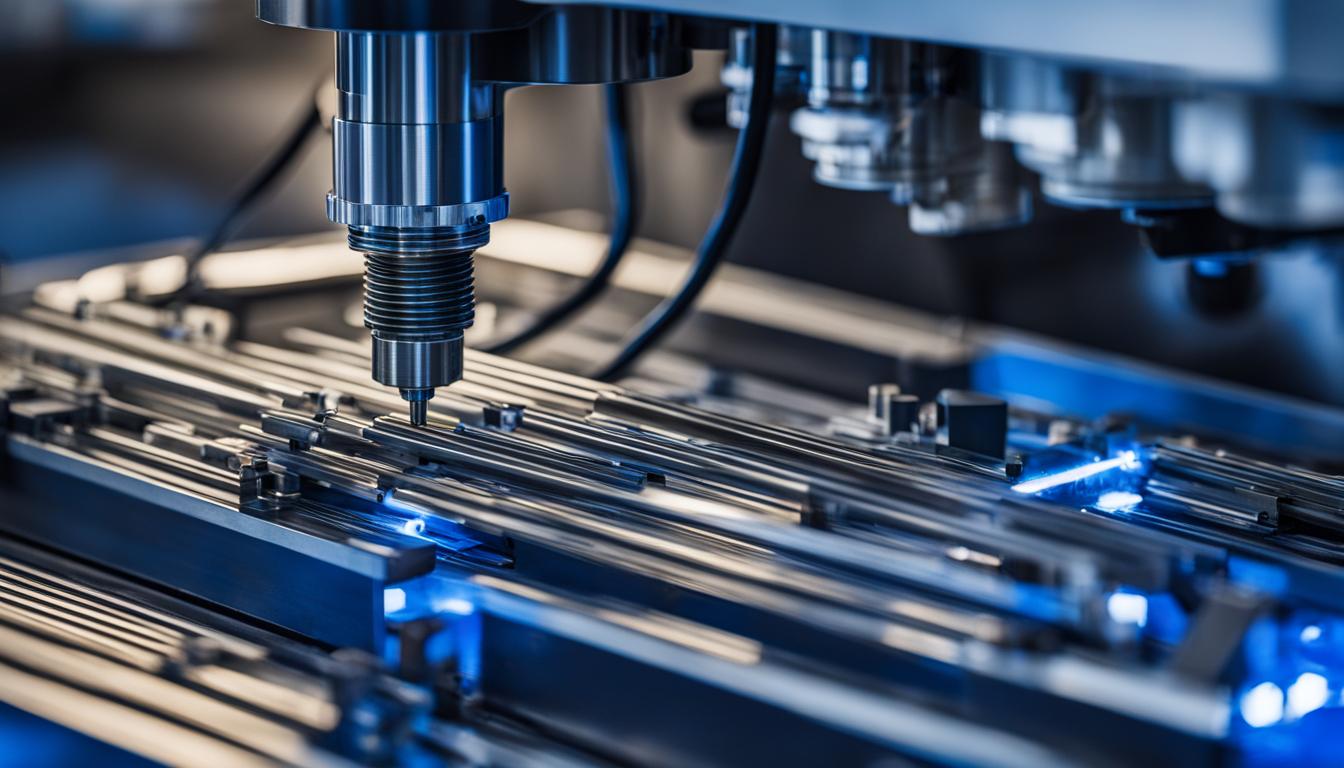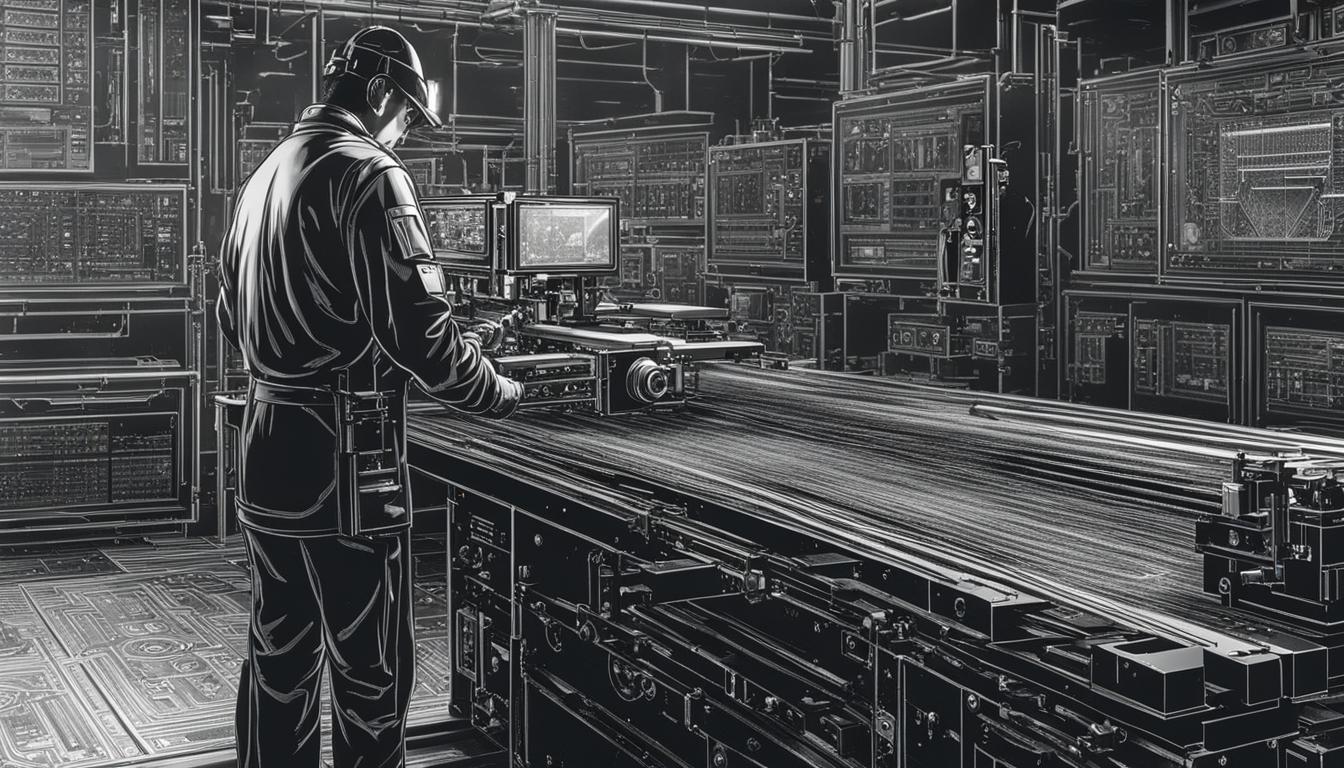Mastering CNC control software begins with five crucial steps that lay the foundation for proficiency. Familiarize yourself with the software interface, exploring menus, toolbars, and basic functions to navigate efficiently. Learn to create and manipulate basic geometric shapes, as this skill forms the basis for more complex designs. Understand G-code programming fundamentals, the language that communicates instructions to CNC machines.
Practice simulating tool paths to visualize how the machine will operate and identify potential issues before actual cutting. Lastly, study post-processing techniques to convert your designs into machine-specific code, ensuring compatibility with your particular CNC equipment. These initial steps provide a solid groundwork for developing expertise in CNC control software, enabling you to progress towards creating intricate designs and optimizing machining processes.
- Understanding the concept of CNC machining is crucial before diving into control software.
- Selecting the right CNC machine for your needs is a critical decision.
- Learning the basics of G-code is essential for controlling CNC machines.
- Properly setting up your CNC machine ensures optimal performance.
- Starting with simple projects allows for gradual learning and skill development.
Understanding CNC Machining
CNC machining is an advanced process that utilizes computer software to control machines, enabling the creation of precise designs with exceptional accuracy. This technology has revolutionized the manufacturing industry, providing numerous benefits such as precision, efficiency, versatility, and cost-effectiveness.
When starting out in CNC machining, it is essential to grasp the fundamental aspects of the CNC process. This includes understanding the concept of CNC machining, familiarizing yourself with computer-aided design (CAD) software for design purposes, utilizing computer-aided manufacturing (CAM) software for toolpath generation, and comprehending the various machining stages.
One of the crucial factors in achieving successful CNC machining results is selecting the right CNC machine for your specific needs. With a wide range of CNC machines available, thorough research, reading reviews, and seeking expert advice can help you make an informed decision.
The Benefits of CNC Machining
CNC machining offers a plethora of advantages that distinguish it as a preferred choice for precision manufacturing. Some key benefits include:
- Precision: CNC machines are capable of producing intricate designs with exceptional precision and accuracy, ensuring high-quality end products.
- Efficiency: With computer-controlled operations, CNC machines automate the manufacturing process, allowing for faster production and increased productivity.
- Versatility: CNC machines can work with a wide range of materials, such as metals, plastics, wood, and composites, making them ideal for various industries and applications.
- Cost-effectiveness: Despite the initial investment, CNC machining is cost-effective in the long run due to reduced material waste, minimized labor requirements, and increased production efficiency.
By understanding the CNC machining process and its benefits, you can harness the full potential of this advanced technology and optimize your manufacturing operations for improved efficiency, precision, and overall success.
Types of CNC Machines
When it comes to CNC machining, there are various types of machines available, each with its own strengths and applications. Understanding the different types of CNC machines is essential in choosing the right one for your specific projects. Let’s take a closer look at some of the most commonly used CNC machines:
CNC Milling Machines
CNC milling machines are versatile tools that are widely used in various industries. They are capable of cutting, drilling, and shaping various materials with high precision. CNC milling machines are perfect for creating complex designs and prototypes.
CNC Lathes
CNC lathes are designed for turning and shaping cylindrical or conical objects. They are ideal for creating intricate details and achieving smooth finishes. CNC lathes are commonly used in the production of components for the automotive, aerospace, and medical industries.
CNC Routers
CNC routers are known for their ability to perform intricate carving and 2D/3D machining. They are widely used in woodworking, sign-making, and the production of decorative objects. CNC routers are capable of working with various materials, including wood, plastic, and composites.
CNC Plasma Cutters
CNC plasma cutters are specifically designed for cutting thick sheets of metal. They use a high-velocity jet of ionized gas, or plasma, to melt and remove the material. CNC plasma cutters are commonly used in metal fabrication, construction, and automotive industries.
CNC 3D Printers
CNC 3D printers, although not traditional CNC machines, are revolutionizing the world of manufacturing. They use additive manufacturing techniques to create complex and intricate prototypes and custom components. CNC 3D printers are widely used in industries such as aerospace, healthcare, and automotive.
Having a good understanding of the different types of CNC machines is crucial in selecting the right machine for your specific applications. Each machine has its own unique capabilities and is suited for different tasks and materials.

The Power of CNC Machining
CNC machining offers precision, efficiency, and versatility in the realm of craftsmanship. With CNC machines, you can achieve precise cuts, carvings, and engravings with flawless accuracy. The advanced technology and automated processes of CNC machining remove the possibility of human error, ensuring consistent and high-quality results.
One of the key advantages of CNC machining is its efficiency. Once the program is set up, CNC machines can operate autonomously, allowing you to focus on other tasks simultaneously. This efficiency not only saves time but also increases productivity, making CNC machining ideal for large-scale production and tight deadlines.
The versatility of CNC machining is another remarkable feature. CNC machines can work with a wide range of materials such as wood, metal, plastics, and composites, offering endless possibilities for various industries. Whether you’re working on woodworking projects, metalworking tasks, jewelry making, or prototyping, CNC machining provides the flexibility to meet diverse creative and manufacturing needs.
Furthermore, CNC machining is affordable and cost-effective in the long run. While the initial investment may seem significant, the precision and efficiency of CNC machines translate into higher productivity and reduced material wastage, leading to significant savings over time. Small businesses and individuals can now access top-quality machining without breaking the bank.
The applications of CNC machining are extensive and cover various industries. In woodworking, CNC machines can create intricate designs, cut precise joints, and produce detailed carvings. In metalworking, CNC machining enables precise fabrication, shaping, and engraving. Jewelry makers can craft exquisite pieces with intricate details using CNC machinery. Additionally, the prototyping industry heavily relies on CNC machining for creating accurate and functional prototypes.
CNC machining plays a vital role in modern manufacturing, offering numerous benefits such as precision, efficiency, versatility, affordability, and extensive applications. By harnessing the power of CNC machining, craftsmen and manufacturers can elevate their work to new heights and achieve extraordinary results.
CNC Machine Programming
CNC machine programming plays a crucial role in guiding CNC machines to manufacture precision parts. By creating instructions or code, programmers enable the machines to carry out specific movements and operations. One of the key elements of CNC programming is G-code, a standardized language that controls the machine’s actions.
There are various approaches to CNC programming, each with its own benefits and applications. Manual programming involves manually inputting G-code instructions, providing full control over the machining process. Conversational programming simplifies the programming process by using user-friendly interfaces and prompts to generate the necessary code.
Another method is CAM programming, which involves using Computer-Aided Manufacturing software to generate toolpaths and automatically generate G-code. This integration of Computer-Aided Design (CAD) and CAM streamlines the manufacturing process, reducing errors and saving time.
High-level programming
On the other hand, high-level programming allows for the use of programming languages like Python or C++ to program CNC machines, providing advanced capabilities and customization options.
Additionally, post-processor customization enables programmers to modify the G-code generated by CAM software to match the specific requirements of their machines. This customization ensures optimal machine performance and efficiency.
Understanding the different types of CNC programming techniques empowers programmers to select the most suitable approach for their projects. Whether it’s manual programming, conversational programming, CAM programming, high-level programming, or post-processor customization, each method contributes to the successful execution of precision machining tasks.

| Programming Technique | Description |
|---|---|
| Manual Programming | Inputting G-code instructions manually for full control over the machining process. |
| Conversational Programming | Using user-friendly interfaces and prompts to generate G-code efficiently. |
| CAM Programming | Utilizing computer software to generate toolpaths and G-code automatically. |
| High-level Programming | Using programming languages like Python or C++ to program CNC machines. |
| Post-processor Customization | Modifying the generated G-code to match specific machine requirements. |
CNC Programming Process
The CNC programming process involves several crucial stages to ensure the successful execution of CNC machining projects. By following a systematic approach, you can optimize your workflow and achieve precise and high-quality results. Let’s explore the key steps in the CNC programming process:
1. CAD Design
First, you need to create a detailed digital model of the part you want to produce using Computer-Aided Design (CAD) software. CAD allows you to accurately visualize and define the geometry, dimensions, and features of the component.
2. CAM Toolpath Generation
Once you have the CAD design ready, it’s time to generate a toolpath using Computer-Aided Manufacturing (CAM) software. The toolpath determines the cutting or shaping movements that the CNC machine will follow to manufacture the part. CAM software optimizes toolpaths based on factors such as material properties, cutting tools, and desired surface finishes.
3. CNC Program Writing
After generating the toolpath, you need to write the CNC program using the industry-standard G-code. G-code is a language that communicates instructions to the CNC machine, specifying the sequence of operations, tool changes, feed rates, and other parameters. The CNC program converts your design into machine-readable code.
4. CNC Machine Setup
Once the CNC program is ready, it should be transferred to the CNC machine. Proper setup is essential to ensure accurate machining. This involves securely clamping the workpiece, installing the correct cutting tools, and verifying machine calibration and alignment. A well-set-up machine guarantees consistent and precise results.
5. Running the Program
With the CNC machine properly set up, you can start running the program. The machine will follow the specified toolpath and perform the programmed operations, such as cutting, drilling, or milling. During this stage, it is important to closely monitor the process to detect any issues or deviations.
6. Monitoring and Adjusting
Throughout the machining process, the operator should monitor the CNC machine’s performance and make necessary adjustments. This may include modifying cutting speeds, feed rates, or tool changes to optimize efficiency, minimize errors, or address any unexpected challenges that arise.
7. Finishing and Quality Control
Once the machining is complete, the finished part undergoes thorough inspection and quality control. This step ensures that the final product matches the design specifications. Common quality control techniques include dimensional measurements, surface roughness analysis, and visual inspections.
8. Finishing Process
The final step in the CNC programming process is the finishing stage. This involves removing any burrs or excess material, smoothing the surface, and applying coatings or finishes if required. The finishing process enhances the visual appearance and functionality of the part, meeting the desired standards.
By following these steps in the CNC programming process, you can achieve precise, efficient, and high-quality results in your CNC machining projects.
Conclusion: Achieving CNC Machining Excellence
Successfully mastering CNC control software requires following a systematic approach. By understanding the concept of CNC machining, selecting the right CNC machine, learning G-code, setting up your machine properly, and starting with simple projects, you can begin your journey to CNC machining excellence. It is important to pay attention to material preparation, CNC machine programming, the machining process itself, inspection and quality control, and finishing for a successful CNC machining project. By following these steps and continuously improving your skills, you can achieve excellence in CNC machining.
